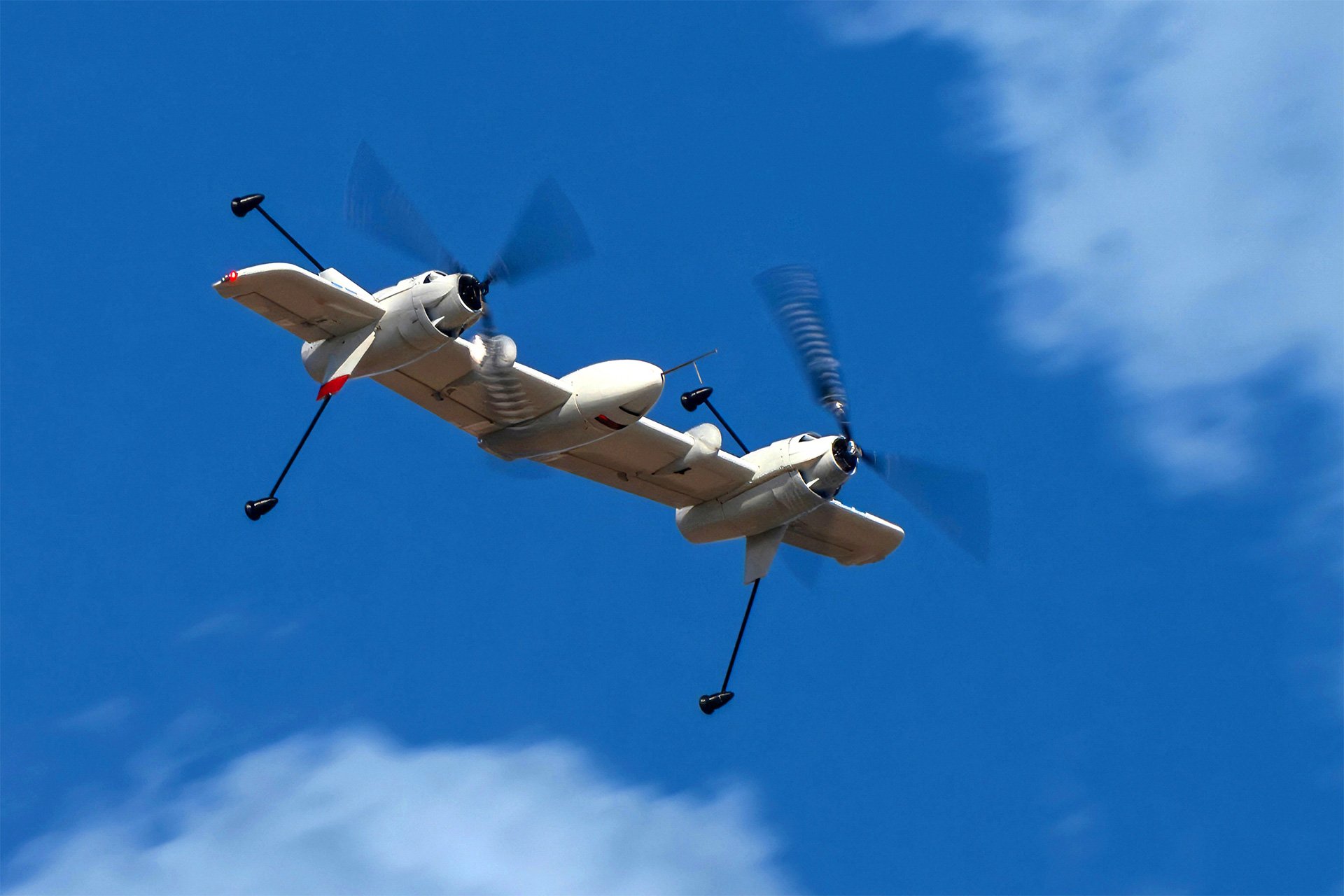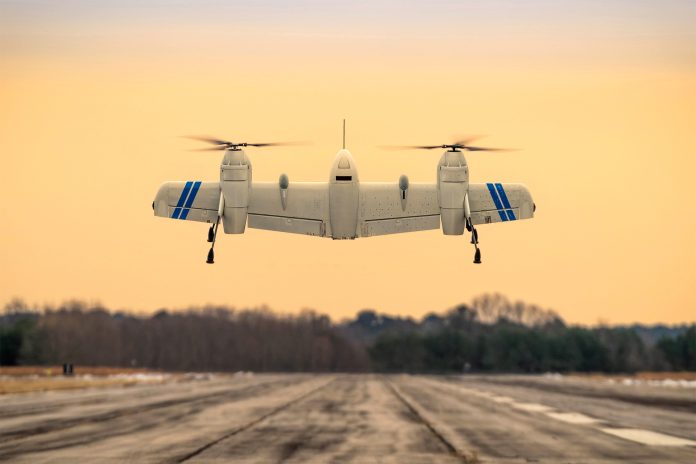Lockheed Martin subsidiary Sikorsky has successfully tested a 115-lb (52-kg) autonomous drone featuring a “rotor blown wing” (RBW) design. This electric-powered aircraft can transition between helicopter and airplane flight modes, offering potential benefits for various applications, including military and emergency response operations. The company highlights the scalability of this technology for larger airframes.
Rotor blown wing technology
The RBW concept utilizes rotor or propeller backwash directed over wing surfaces, which enhances lift and reduces drag by increasing air velocity over the wings. While there are trade-offs in power and efficiency, this approach provides advantages for short takeoff and landing (STOL) and vertical takeoff and landing (VTOL) aircraft. Additionally, it improves flight control, particularly in the transition between hover and cruise modes.
Sikorsky states that the RBW design supports smoother transitions in tail-sitter, tilt-rotor, and similar aircraft. This led the company to incorporate the technology into its latest tail-sitting drone, aiming for enhanced operational stability and maneuverability.
Testing and performance
Lockheed Martin conducted initial flight tests in January 2025, with the prototype completing over 40 takeoffs and landings. The drone also executed 30 complex transitions between helicopter and airplane modes, achieving a top cruise speed of 86 knots (99 mph, 159 km/h). Parallel wind tunnel tests were performed using a full-scale model, enabling direct comparisons between controlled experiments and real-world flight data.
A key goal of the project was to validate the capabilities of Sikorsky Innovations, the company’s rapid prototyping division. The team advanced from the preliminary design phase to an untethered flight demonstration within approximately one year.

Advanced flight control systems
The RBW prototype incorporates Sikorsky’s MATRIX flight autonomy system, which enhances stability and control. The tests assessed the system’s advanced control laws—mathematical models governing flight dynamics—ensuring precise maneuverability in different flight conditions. The company also explored how RBW can minimize drag during hover, which could benefit larger hybrid-electric variants in the future.
Potential applications
Once the RBW technology reaches maturity, it could serve multiple operational roles, including:
- Search and rescue missions
- Firefighting monitoring
- Humanitarian response operations
- Pipeline and infrastructure surveillance
- Long-range intelligence, surveillance, and reconnaissance (ISR)
- Military applications, including teaming with crewed aircraft for combat missions
Sikorsky Innovations Director Igor Cherepinsky highlighted the importance of the RBW system, stating, “Our rotor blown wing has demonstrated the control power and unique handling qualities necessary to transition repeatedly and predictably from a hover to high-speed wing-borne cruise flight, and back again. New control laws were required for this transition maneuver to work seamlessly and efficiently. The data indicates we can operate from pitching ships’ decks and unprepared ground when scaled to much larger sizes.”
As development progresses, Sikorsky’s rotor blown wing technology could enhance the versatility and effectiveness of unmanned aircraft across a range of industries and military operations.
Source: Lockheed Martin



